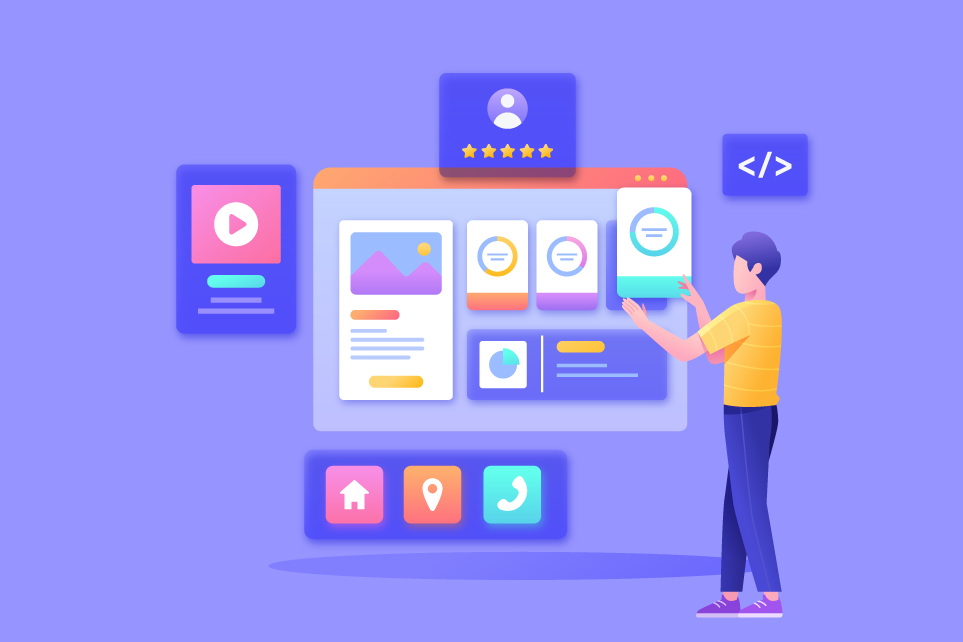In today’s digital age, personalization has become a cornerstone of exceptional user experience (UX). By tailoring interfaces to meet individual user needs and preferences, businesses can enhance engagement, satisfaction, and loyalty. This blog post explores the importance of personalization in UI design and offers strategies for creating customized experiences that resonate with users.
The Importance of Personalization
- Enhanced User Engagement: Personalized interfaces capture user interest by presenting relevant content and features, encouraging prolonged interaction.
- Increased Satisfaction: Tailored experiences meet users’ specific needs and preferences, resulting in higher satisfaction and a more positive perception of the product or service.
- Improved Conversion Rates: By delivering content and recommendations that align with user interests, businesses can drive higher conversion rates and sales.
- User Retention: Personalized experiences foster a sense of connection and loyalty, encouraging users to return and engage with the platform regularly.
Key Strategies for Personalization in UI Design
User Profiling and Segmentation
- Demographic Data: Collect and utilize demographic information such as age, gender, location, and language to tailor content and interface elements.
- Behavioral Data: Analyze user behavior, including browsing history, purchase patterns, and interaction preferences, to create more relevant experiences.
- Psychographic Data: Understand users’ interests, values, and lifestyle choices to deliver personalized recommendations and content.
Adaptive Content
- Dynamic Content Delivery: Use algorithms to dynamically adjust content based on user behavior and preferences, ensuring relevance and engagement.
- Personalized Recommendations: Implement recommendation engines that suggest products, articles, or features based on user history and preferences.
- Contextual Content: Provide content that adapts to the user’s current context, such as location, time of day, or device being used.
Customizable Interfaces
- Theme Selection: Allow users to choose from different themes or color schemes to personalize the look and feel of the interface.
- Layout Customization: Enable users to rearrange interface elements, create custom dashboards, or set up shortcuts to frequently used features.
- Preference Settings: Offer settings where users can specify their preferences for notifications, content types, and interface behavior.
Machine Learning and AI
- Predictive Analytics: Use machine learning algorithms to predict user needs and preferences, offering proactive recommendations and content.
- Chatbots and Virtual Assistants: Implement AI-driven chatbots that provide personalized support and information based on user interactions.
- Behavioral Insights: Leverage AI to gain deeper insights into user behavior, helping to refine and enhance personalization strategies over time.
User Feedback and Testing
- Continuous Feedback Loops: Encourage users to provide feedback on their experiences and use this data to make iterative improvements.
- A/B Testing: Conduct A/B tests to compare different personalization strategies and identify which approaches are most effective.
- User Surveys and Interviews: Engage directly with users through surveys and interviews to better understand their needs and preferences.
Challenges and Considerations
Privacy and Data Security
- Transparency: Clearly communicate how user data is collected, stored, and used for personalization, ensuring users understand and consent to data practices.
- Data Protection: Implement robust security measures to protect user data from breaches and unauthorized access.
- User Control: Provide users with control over their data, allowing them to manage their preferences and opt-out of personalization if desired.
Balancing Personalization and Usability
- Avoid Over-Personalization: While personalization is valuable, excessive customization can overwhelm users and complicate the interface.
- Maintain Consistency: Ensure that personalization does not compromise the overall consistency and coherence of the interface design.
- Focus on User Goals: Personalization should enhance the user’s ability to achieve their goals, not distract or divert them from their primary tasks.
Scalability
- Performance Optimization: Ensure that personalization features do not negatively impact the performance or loading times of the application.
- Scalable Solutions: Design personalization strategies that can scale effectively as the user base grows and diversifies.
Future Trends in Personalization
- Hyper-Personalization: Leveraging advanced data analytics and AI to deliver even more granular and precise personalization experiences.
- Cross-Channel Personalization: Ensuring a seamless and consistent personalized experience across all user touchpoints, from web to mobile to in-store interactions.
- Emotional Personalization: Using emotional AI to tailor experiences based on users’ emotional states, enhancing empathy and connection.
In conclusion, personalization in UI design is essential for creating engaging, satisfying, and effective user experiences. By leveraging user data, adaptive content, machine learning, and continuous feedback, designers can craft interfaces that resonate with individual users on a deeper level.
As technology advances, the possibilities for personalization in web apps and mobile apps will only expand, offering exciting opportunities to enhance user interactions and drive business success.

